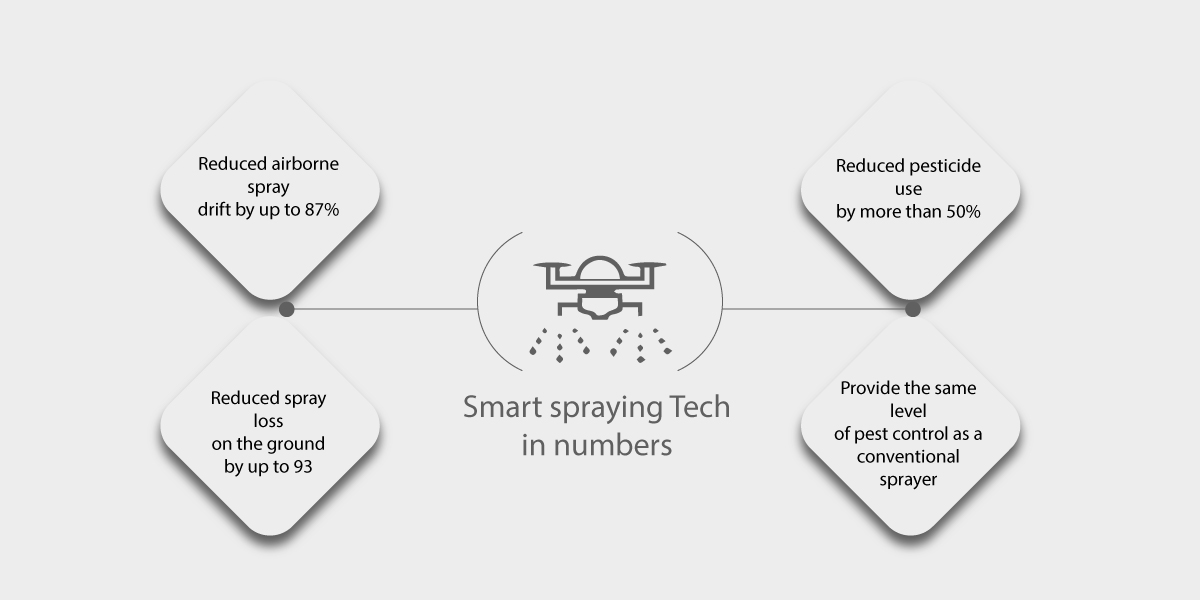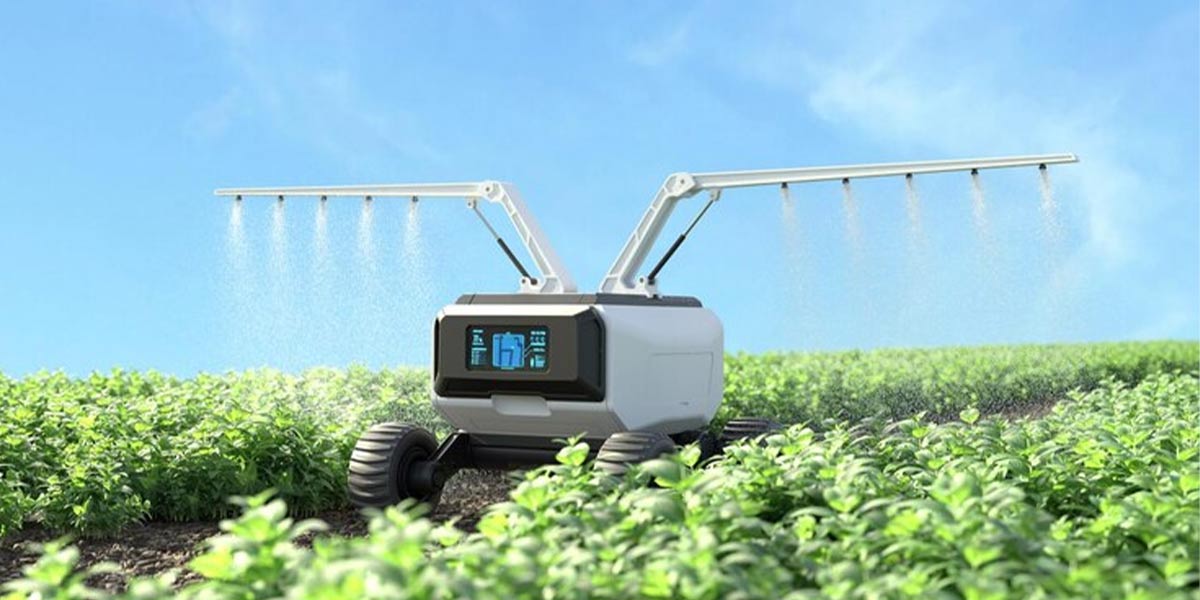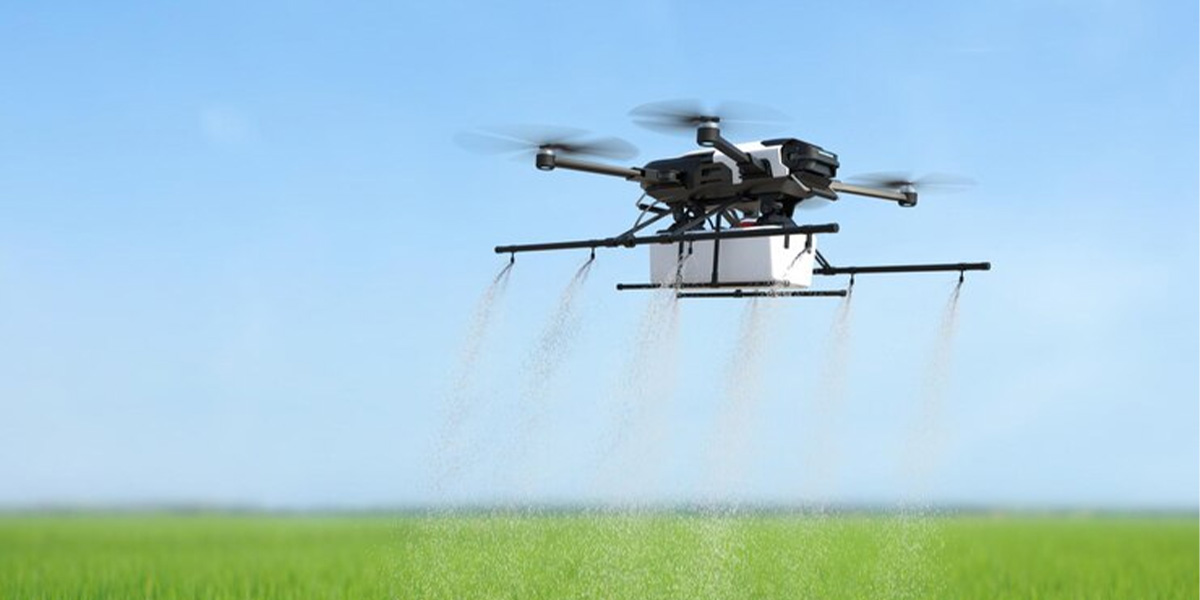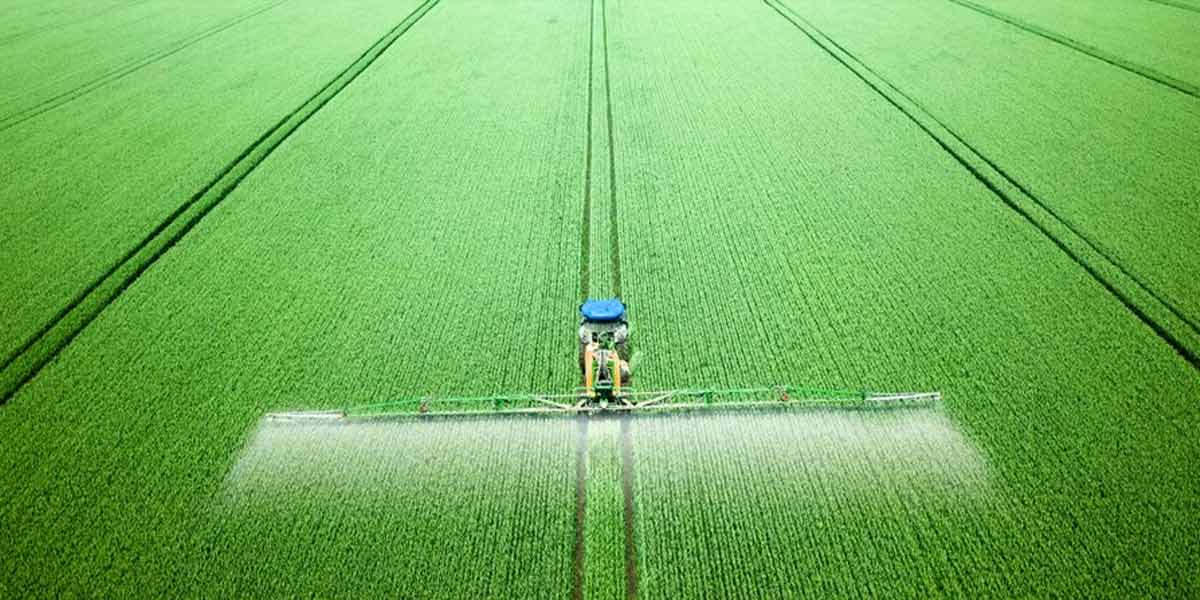The agriculture industry has changed a lot over the decades. With modern machinery and better equipment, the future of agriculture is bright. Despite the changing climatic scenario, agricultural advancement has managed to thrive, showcasing resilience and adaptability in the face of evolving climatic conditions. Evolving technology is changing agriculture. Technological advancements in agriculture have increased the efficiency and income of farmers. Every farmer faces difficulties due to climate change and altering geography. However, the food production is the process that needs to go on, and innovation helps it find its way through challenges.
Agriculture is the backbone of the human race, and the increase in food demands called for technological advancements in farming. The agriculturists have found ways to manage and optimize farming. Modern technology is not fully automating the farming process. It is rather taking conventional agricultural practices towards precision agriculture. The latest technologies are helping the agriculture industry to flourish. In the present times, technology has helped farmers in many ways. From reducing labor costs to increasing crop yields, technology facilitates agricultural growth.
Introduction and Background
Agriculture is considered one of the most remarkable domains of all the other sectors which have helped the farmers to accomplish their task of increasing profitability and improving the standard of living. Different innovative technologies have allowed farmers to expand their production in a wide range. Plant Protection is a very significant element in increasing crop yield; therefore, spraying agrochemicals and pesticides in huge amounts may be harmful to the crop and the consumers; thus to solve these aspects, spraying technologies are emerging with recent evolution.
The spraying method involves a mixture of agrochemicals and water, which is further sprayed on the unwanted vegetation, but this also impacts the non-targeted plants and species. Herbicides are chemicals specifically used in farming for killing weeds whereas they are also known as hazardous for human health as well as the environment. The number of types of herbicides, the amount of them, and their environmental impact are rising every day.
A smart spraying technology is a cutting-edge substitution to a conventional sprayer that automatically disperses chemicals on the crops following a set of regulations ensuring the process is efficient and sustainable. Smart spraying technology has proven to be beneficial for agriculture businesses by reducing airborne spray drift by up to 87%, reducing spray loss on the ground by up to 93%, reducing pesticide use by more than 50%, showing the same level of pest control as a conventional sprayer. Therefore with the advancement of spraying technology, it will help to reach out to only the selective crops to get eliminated.
Smart spraying technology uses multiple sensors and detectors to identify the presence or absence of weeds. Only when the target is present in the spray zone, they activate smart spray nozzles.
Data Bridge Market Research analyses that the agricultural sprayers market was valued at USD 4,751.10 million is expected to reach the value of USD 7,073.20 million by 2029, at a CAGR of 5.1% during the forecast period. The demand for agricultural sprayers has increased due to increased farmer awareness, a shift toward using modern agricultural techniques, and increased production of various crop types in the agricultural sprayers market.
To know more about the study, visit: https://www.databridgemarketresearch.com/reports/global-agricultural-sprayers-market

Benefits of Using Smart Spraying Technologies
Conventional spraying technologies are still widely used, but the advantages of smart spraying technology solve many more issues than any conventional one. Moreover, the increase in population will require much more food to be grown, therefore much more labor to be done.
Decrease in Environmental Risks
Herbicides are necessary for ensuring the production of food, but their overuse seriously affect the environment. Smart spraying technology is supposed to decrease herbicide drift, which decreases environmental risks as the amount of herbicides used by smart sprayers is 70% lower compared to the amount applied by a conventional one.
It is only possible because smart spraying technology identifies exact areas or exact weeds on which the solution must be applied. Therefore, farmers can save on production costs as the amount of herbicide utilized is strictly controlled.
Levelling the Risks for Human Health
Moreover, not only does the over-application of herbicides contribute to environmental risks, but it also causes serious issues for human health. Therefore, off-target spray deposition is a key issue to be solved, which also means dealing with the ensuing consequences.
Facilitating Farmers in Labor
The challenges faced by farmers in spraying include weather conditions such as wind speed, wind direction, relative humidity, and temperature. Spraying technology aims at precision in any sort of weather conditions conceivable to reach a set target with a minimum threat to the environment and human health.
Additionally, the issue, that is commonly overlooked, is the crop foliage and its density. Depending on these factors, the uniformity of herbicide application is much less useful. Consequently, smart spraying technology with its smart sensors can facilitate the task with zero waste and minimum impact on the environment while also saving on the cost. Hence, the use of smart spraying technology is a lot less time-consuming.
Conventional spraying technology is extremely laborious whereas smart spraying technology is much more convenient to utilize as a result of the enhanced properties.
Easy to Use
The control over a smart sprayer is always at hand, which is in a mobile, laptop, or a tablet. Anybody can get the hang of the controls as easily as it is to get into the use of the GPS. With the push of the button, there is a possibility to adapt all the parameters as well as introduce some changes into it.
Reducing the Cost
The use of smart spraying technology reduces the over-application of herbs which benefits the ecosystem and human health. On the other side, the reduction of herbicide drifts also influences the cost of the herbicide, thus offering an additional benefit.
Disease Detection
Due to the use of smart spraying technology, plant diseases may be identified and cured simultaneously. With the analysis of the images from the cameras, the decision is easy to make. The farmer then has to decide whether to apply a solution on the spot, patch, or the whole area altogether. Such accuracy preserves the amount of crop and, indeed, saves on the costs.

Technological Innovations Driving Smart Sprayers
In recent years variable spray technology has attract researchers as well as farmers and showed great advancement in the development and utilization of technology variable rate sprayers in terms of target detection technology, based on real-time sensors. Sensors such as Ultrasonic sensor, Infrared sensor, and LiDAR sensor are used in variable sprayers for the feature detection of the target area. The process of spray device control unit adjusts the real-time application of spray rate and allows accurate sprays which are essential on canopy.
Farming faces challenges that increase the adverse effects on farms’ economics, labor, and the environment. Smart farming technologies (SFTs) are expected to assist in reverting this situation. In recent times innovations of smart sprayers such as variable sprayers, and drone sprayers have used sensors to identify the infected plant and using algorithms they spray the required amount of herbicide on the crop.
For Instance,
- Orchard sprayer has been another advanced smart spraying technology that covers a wide range of plant canopies and with additional features, it also helps to reduce the spraying loss, therefore, giving higher output.
Sprayers can act as an effective pest control tool, it is also an effective way for controlling invasive vegetation, besides the usage of a sprayer efficiently prevents areas prone to soil erosion or dryland. Another benefit it provides is to cool insects and livestock to meet the required agricultural needs. This is a very befitting tool for agricultural operations.
- An advanced sprayer include Fendt- Rogator-900-series which can run at standard clearance mode at 56-60 inches and with a push button it can raise to 72-76 inches for late-season application. Hagie STS20 has additional features having a capacity of 2000 gallon solution with 400 Hp John Deere Engine provision.
- Another model which is the Miller Nitro 7000 series uses precision technology for spraying applications. It has high horsepower and large tank capacity and can control the spray droplet size and coverage in a given time frame.
- Air-assisted electrostatic sprayers are also a new development in plant protection machinery which enhanced the pesticides application efficiency to crops, vine-yards, orchards, plants, and trees. Electrostatic spraying method spray decreases off-target drift, environmental issues, and human health risks
With more innovative inventions, sprayers can help in providing additional inputs in a farm field performing multiple tasks from spraying herbicides to water at an efficient rate. With its automatic features and self-propelled function it can easily bring out better results. Therefore modern technologies can play a very significant role in boosting the farmer's produce and play a key role to feed it to mass consumers globally.
Automation and IoT
Artificial Intelligence (AI) and automation in farming substitute human intelligence to perform such tasks as analyzing data, making decisions, and learning from patterns.
Collecting data from sensors, satellites, drones, and other sources, AI algorithms including machine learning and deep learning, analyze it to identify patterns, correlations, and anomalies. This analysis helps in understanding crop health, pest infestation, weed distribution, and other factors influencing the spraying process.
AI algorithms enable autonomous crop management. When combined with IoT (Internet of Things) sensors that monitor soil moisture levels and weather conditions, algorithms can decide in real-time how much water to provide to crops. An autonomous crop irrigation system is designed to conserve water while promoting sustainable farming practices.
The agriculture sector can make use of computer vision and data analytics to reduce the amount of pesticides and herbicides sprayed on fields, making it more precise. AI sprayers can detect weeds in real time and spray only a particular amount of chemicals on a precisely determined spot. Such a solution typically consists of a camera that takes pictures of crops, an AI algorithm that detects weeds, and a nozzle that receives a signal to spray. Such a smart approach improves the quality of crops and also saves money.
Another AI use case in farming is predictive analytics. AI can provide farmers with predictions about future pest outbreaks and crop health or determine irrigation patterns and the amount of harvest based on weather forecasting. These models can forecast potential issues, allowing farmers to reduce errors and minimize the risk of crop failures.
Data Bridge Market Research analyses that the artificial intelligence (AI) in agriculture market, which was USD 1.55 billion in 2022, is likely to reach USD 4.65 billion by 2030, and is expected to undergo a CAGR of 16.13% during the forecast period.
To know more about the study, visit: https://www.databridgemarketresearch.com/reports/global-ai-agriculture-market
Moreover, automation is already a major part of the farming process, but it will become even more important in the coming years. Farmers are already using drones to monitor their crops, and advanced sensors can tell them exactly when they need to water or fertilize their fields. In addition, IoT technologies make it possible to create automated irrigation structures where water resources can be managed efficiently. By collecting crop data such as moisture and temperature, IoT technologies can help determine the right amount of water for crops every season.
Drones
Agriculture has been using drones for some two decades, with farmers around the world relying on pioneers like Yamaha’s RMAX remote-controlled helicopter to help with crop spraying. Now the next generation of drones is starting to impact the sector, with the ability to survey crops and herds over vast areas quickly and efficiently or as a relay system for ferrying real-time data to other connected equipment and installations. Drones also could use computer vision to analyze field conditions and deliver precise interventions like fertilizers, nutrients, and pesticides where crops most need them. Or they could plant seed in remote locations, lowering equipment and workforce costs.
Unmanned Aerial Vehicles or drones are increasingly becoming useful in crop management. Farmers can use sensor-equipped drones to monitor the growth of plants, detect disease stress, monitor field temperature, and spray pesticides or fertilizers at desired locations on the field. The inherent benefits and the rise of drones in farm operations lie in their ability to help farmers acquire comprehensive data to make timely decisions.

Precision Agriculture
The increase in the global population has led to increased food production per capita. However, this has also led to water shortages due to irrigation purposes. To combat these issues, farmers are turning towards precision agriculture as it can save them both time and money.
AI systems are helping to improve the overall harvest quality and accuracy – known as precision agriculture. AI technology helps in detecting disease in plants, pests and poor nutrition of farms. AI sensors can detect and target weeds and then decide which herbicide to apply within the region. This helps in reduced usage of herbicides and cost savings. Many technological companies developed robots, which use computer vision and artificial intelligence to monitor and precisely spray on weeds. These robots are able to eliminate 80% of the volume of the chemicals normally sprayed on the crops and bring down the expenditure of herbicide by 90%. These intelligent AI sprayers can drastically reduce the number of chemicals used in the fields and thus improve the quality of agricultural produce, and bring in cost efficiency.
Precision agriculture is a rapidly evolving farm management system that involves the use of sensor technology, AI, GIS, and IoT to collect and analyze data about the soil, plants, and animals. It allows for more targeted use of inputs such as water, fertilizer, plant nutrients, pesticides, seeds, and labor. Precision agriculture deviates from conventional agriculture practices, where a uniform method is employed over a large area regardless of soil quality or topography variation
Precision agriculture market is expected to gain market growth in the forecast period of 2021 to 2028. Data Bridge Market Research analyses the market to grow at a CAGR of 13.40% in the above-mentioned forecast period. Increasing need to adopt specific farming solutions to manage the raw materials has been directly impacting the growth of precision agriculture market.
To know more about the study, visit: https://www.databridgemarketresearch.com/reports/global-precision-agriculture-market

The latest advancements in plant protection for agriculture involve automatic robotic sprayer systems powered by software and air-assisted electrostatic sprayers. These technologies are increasingly being adopted, and they improve the efficient distribution of chemical fertilizers and other substances onto crops, vineyards, orchards, plants, and trees. They ensure proper coverage while minimizing wastage.
The agriculture sprayers market has witnessed significant advancements in spraying technologies, enhancing application efficiency and reducing chemical wastage. Manufacturers are developing sprayers with improved nozzle designs, such as air-induced nozzles and drift reduction technologies, to ensure accurate and targeted spray application while minimizing drift and off-target effects. Furthermore, the integration of artificial intelligence and machine learning algorithms in sprayers enables real-time monitoring and adjustment of spray parameters, resulting in enhanced spray efficacy.
Conclusion
Farmers have always looked to new technologies as a way to reduce costs. In addition, higher incomes, greater knowledge and improved channels of communication are leading consumers to demand low-cost food of higher quality increasingly produced through organic methods in many countries, with more variety, consistency and year-round availability. At the same time, consumers are increasingly demanding that their food be produced using techniques that conserve natural resources, limit environmental pressures and pay greater attention to rural viability and animal welfare.
As per Data Bridge Market Research analysis the global smart agriculture solution market was valued at USD 14.11 billion in 2021 and is expected to reach USD 42.06 billion by 2029, registering a CAGR of 12.90% during the forecast period of 2022-2029.
To know more about the study, visit: https://www.databridgemarketresearch.com/reports/global-smart-agriculture-solution-market
Plant protection practices are most important activities during crop production. Progress in spraying technology has been increase in recent past. Robotics and automatic spraying technologies like variable rate sprayers, UAV sprayers, and electrostatic sprayers has gained more attention to enhance. These advanced spraying technologies not only reduces the labor cost but also effective in environ-mental protection. Researchers are conducting experimental studies on the design, development and testing of precision spraying technologies for crops and orchards. Simulation modeling studies are also conducting by the researcher to increase the sprayer’s efficiency and to improve the design for better utilization.
Moreover, the international agricultural sprayer industry is witnessing increased collaboration and partnerships among different stakeholders. Sprayer manufacturers are joining forces with agritech companies, research institutions, and farmers' associations to co-develop innovative solutions, exchange knowledge, and improve industry practices. These collaborations foster cross-pollination of ideas, encourage technological advancements, and promote sustainable agricultural practices on a global scale.






